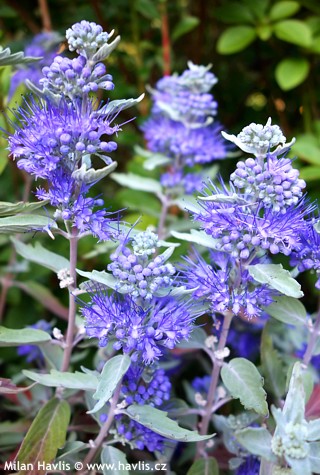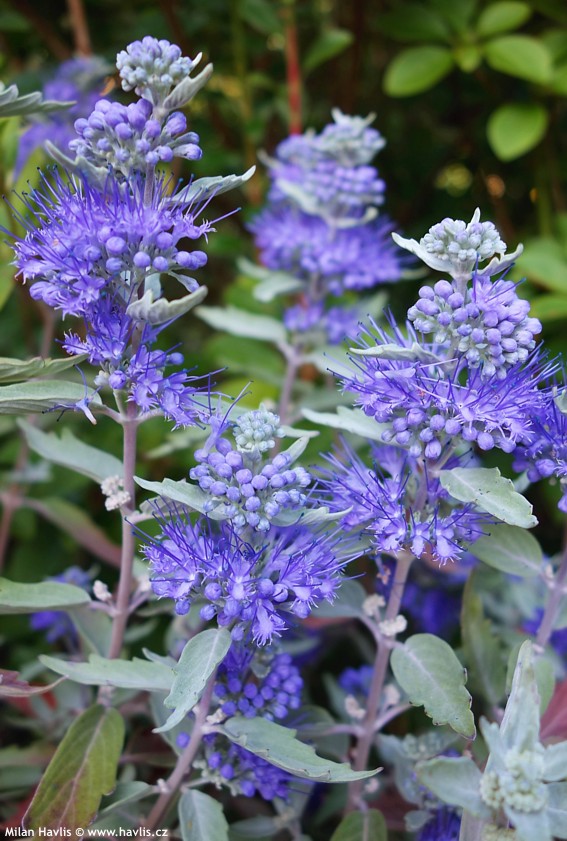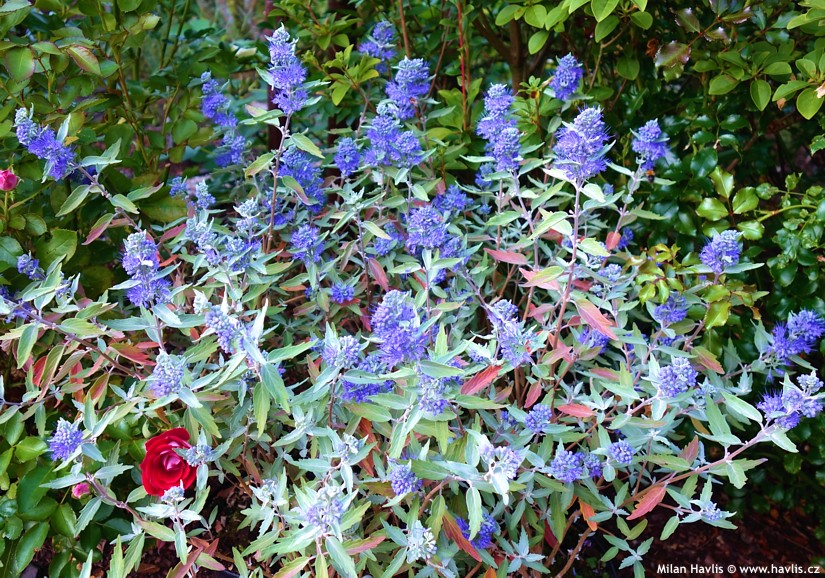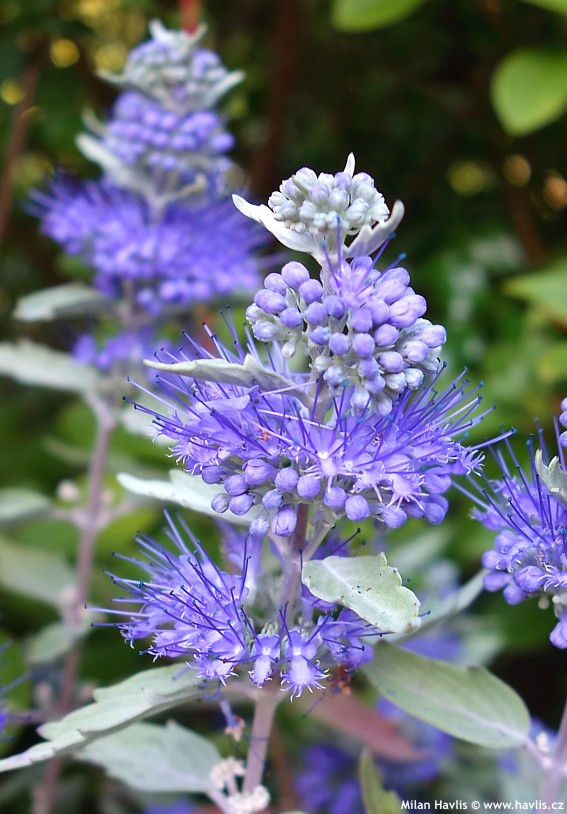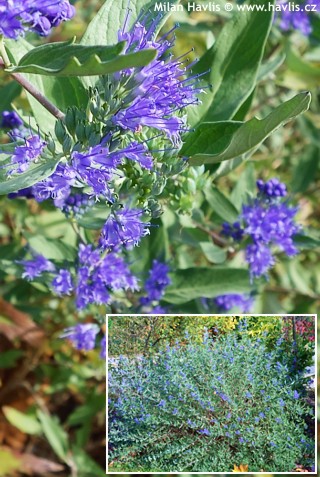Caryopteris x clandonensis ('Lissilv') STERLING SILVER bluebeard
Caryopteris
STERLING SILVER is another success by a UK breeder Peter Catt who so far has had more than 60 plant introductions. I imagine this bluebeard belongs to his favourite violet line since he bred a number of bluebeards, perovskias, and plumbagos with violet or blue flowers. It is a cross between varieties Longwood Blue and Heavenly Blue, and the first plant was discovered in 2006. The patent No. PP22474 was issued in 2012 and the plant was named “Lissilv”.
STERLING SILVER brings a welcoming refreshment into the bluebeard family. It also produces violet blue flowers like all the others yet there is something more to catch your eye – prominent silvery blue-green shade of the foliage. The deciduous leaves are a little larger as opposed to the parent varieties, have an interesting smell when crushed, and make the plant very attractive long before it begins to bloom. They turn purple red and amber orange in autumn. Flowering starts in midsummer, and the cymes of violet flowers, always occupied by bumble bees, butterflies and similar insects, keep on blooming until mid autumn.
The plant grows medium fast into a well-behaved, upright and compact shrub. It needs to be pruned hard every spring – cut back two thirds of previous year’s growth to encourage prolific branching that will secure even more profuse flowering. Thanks to its unusual foliage colour it will look great combined with pastel-coloured perennials and small shrubs.
Bluebeard is soil tolerant, however, it does best in fertile, very well-drained soil in full sun. It is hardy to about -25°C, in free-draining soil even to -27°C (USDA zone 5b). In zones 4 and 5a it acts like a perennial.
Last update 14-09-2016
Goods are shipped all over Europe. For Russia and U.K. and for further details please read about SHIPPING OPTIONS HERE.
Are you interested in a serious discount for orders NOV-FEB? Check your options here.
THE PRICES INCLUDE VAT of 15%. For quick conversion you can use 1 CZK = approx. 0.04 EUR
- STANDARD QUALITY - Plants of this group are 1st class quality with number of branches and overall density adequate to their size and age, considering they were container grown.
- DE LUXE QUALITY - This label guarantees a luxurious quality of manually selected plants that, compared to their height and age, are exceptionally dense and beautiful.
- EXTRA - These plants are usually mature and bigger specimens with exceptional overall appearance.
- STANDARD (as described in the plant form) means a tree with a trunk of 190-210 cm and a crown at the top, unless specified differently. The commercial size for trees is their girth measured in the height of 1m from ground.
- HOBBY - These plants are of the same quality as our standard-quality plants but younger and therefore cheaper.
- SHRUB - a woody plant with branches growing bushy from the ground level.
- HALF-STANDARD or MINI-STANDARD - a small tree with shorter trunk, its size is usually specified.
- FEATHERED - These are trees with branches growing already from the base of the trunk and up along the stem.
- GRASSES and PERENNIALS - Sizes given usually read the diameter of the pot or the clump, as specified.

































